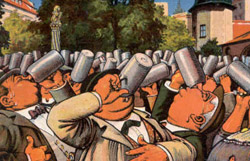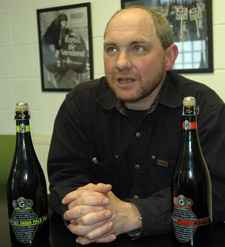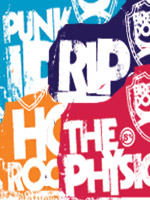 The mantra of the American craft beer movement for going on 30 years has been, “Think globally, drink locally.”
The mantra of the American craft beer movement for going on 30 years has been, “Think globally, drink locally.”
And that means what?
Globalization can be a dirty word whether you are talking about beer or wine. In the case of beer that’s primarily because of pale, bland lagers the United States gets blamed for. In wine the issue has been the emergence alcoholic, one-dimensional fruit bombs – that a lot of people in fact enjoy – with the U.S. again getting much of the blame.
Guess what. The “wine effect” had spread into beer. New Wave beers first associated with the United States are popping up in other countries. The top-rated Imperial Stout at Rate Beer, Närke Kaggen Stormaktsporter, is from Sweden, made with heather honey and aged on oak-barrels for 2½ months. Does that have extreme written all over it or what?
And, as I mentioned earlier this week Britain has its first Double IPA. Stonch’s review provoked an interesting discussion that I started to jump into. But, as you might have already figured out, I had a bit too much to say. So I’m typing here.
The key comments:
First Kieran Haslett-Moore said …
American beers lose subtlety and class in favour of extremeness, why would you want to go there? There are already crass US beers, would crass UK beers make things better?
“Where are the Belgian Strong Ales; the Flemish Sours; the proper hoppy Pilseners; the dunkels? They are just non-existent.”
They are in Belgium, and Germany and quite right to.
“Its brewers have no more connection to any one European brewing tradition that they do any others.”
Absolutely, that lack of connection leaves many such breweries with a slightly soulless range where every beer is totally different and equally out of context.
Then Ron Pattinson said…
Kieran, I couldn’t have put it better.
I like the fact that Britain, Germany and Belgium have their own individual beer cultures. How dull would it be if everything was brewed everywhere and regional differences disappeared?
I don’t want to drink a Kölsch brewed in the UK or USA. That completely misses the point about the beer. You’re right – it’s all about context.
Before I decided to move my words here I had typed:
Ron, I love the idea that it’s not only countries that have different beer cultures but that regions within a country may differ. Compare beer in Northern Germany to Bavaria. Get out your rubber boots if you want to argue about West Coast American beers versus East Coast, because you’ll be hip deep in excrement.
I wouldn’t want to see those lost. But consider that I live in New Mexico. A local brewer used to make (it is no longer brewed) a beer classified Kölsch for competition purposes (once won gold at the Great American Beer Festival). It wasn’t, but then the brewer didn’t call it that. One thing I liked is that it had a rough hop edge because our water is relatively high in carbonates. In other words, the beer was local.
So should I not drink this beer because it was inspired by a Kölsch? Once a region has claimed a “style” does that mean nobody can brew a beer like that elsewhere?
That’s when I realized I was getting windy. I’ll aim for brevity from here on so you may have to connect a few dots.
Local is good first simply because it is local. When you move to a new place you know the best way to “inoculate” yourself against local allergies? Consume the local honey. Those bees acclimate you to everything in the region. When I drink local beer I’m not only tasting local water but taking a good deep breath of local air.
Local is good because jobs stay here. Local is good because local is green – shipping water (the predominant ingredient in beer) is expensive and glass (the next largest part of the weight package) also ain’t cheap to pack off to distant locations.
The context of local brewing has changed. Breweries here in New Mexico don’t have locally grown barley and hops or whatever made brewing regions unique when styles were being established, but we still have beers with local character.
And if you read Pattinson’s blog you’ll appreciate that beer styles (I almost hesitate to use the word) evolve. They are not frozen in time.
Our local brewers shouldn’t be either. Gone are the days that we believed a brewer could master only two or three different recipes (a half dozen at the most).
I don’t want to see regional differences disappear. In other words, Globalization=Bad.
And I’m not suggesting that everybody follow the “American model.” However, if a local brewer finds inspiration in Cologne and brews a good “Kölsch” I think we are ahead.
That’s how “Think globally, drink locally” has helped define the American beer cultural.
And it sure as heck isn’t dull.
 The mantra of the American craft beer movement for going on 30 years has been, “Think globally, drink locally.”
The mantra of the American craft beer movement for going on 30 years has been, “Think globally, drink locally.” Another beautifully written tribute to Michael Jackson, worth your time while you make plans to attend the
Another beautifully written tribute to Michael Jackson, worth your time while you make plans to attend the  No I don’t suddenly covet the beers of BrewDog because they are getting good marks at
No I don’t suddenly covet the beers of BrewDog because they are getting good marks at